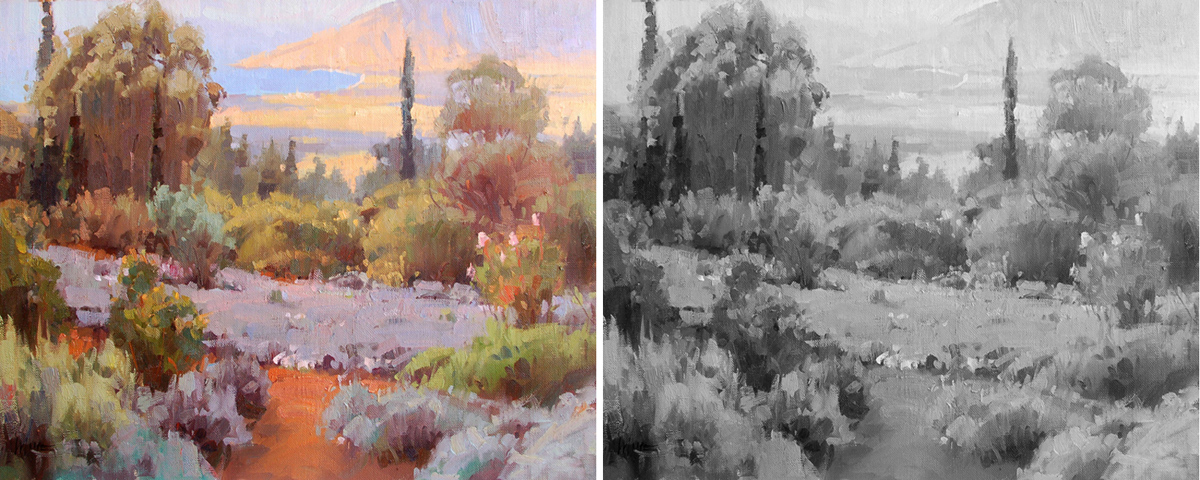color and value
 I thought I had posted this thing before but maybe it was in some past bloglife experience because I couldn't find it on this site. At least it will be new to some of you. I use this little example of how value and color are inextricably interlinked by taking a color painting and converting it to gray scale so we can see how it is that color operates to move the eye, to further the hierarchy of the elements and support the composition.
I thought I had posted this thing before but maybe it was in some past bloglife experience because I couldn't find it on this site. At least it will be new to some of you. I use this little example of how value and color are inextricably interlinked by taking a color painting and converting it to gray scale so we can see how it is that color operates to move the eye, to further the hierarchy of the elements and support the composition.
The main thing about value here is maintaining clear separation of light-side and shadow-side, if you keep that, then you keep the form of the object. light and shadow are the foundation of form. But it's color that does all the work. If you look at the b&w version you'll see how close the values are throughout. When you glance back over to the color you see how color pulls your eye around the painting. It gives some things more weight in a way that value can't.
We all know that value is the grayscale equivalent of color, the two other components of color are hue and chroma. First we figure out whether a color is light or dark then we move on to the next characteristic of color. Hue. I refer to Hugh Jackman as Hugh Jorgan.. but that's another story. Hue is the warm or cool of the color note; it's blue not red, but what kind of blue is it? a warm blue (purple) or a cool blue like Cyan. Next up is the chroma or intensity. Is it an intense color like lemon yellow or is it less so like yellow ochre. I know you guys know this stuff but it helps to think of the characteristics of color when you are looking back and forth from the color version to the black and white version.
Moral of the story; value of light and shadow= form, color does all the work. Value is the boy (black and white) color is the girl (emotion). Getting them to work succesfully together is hard.